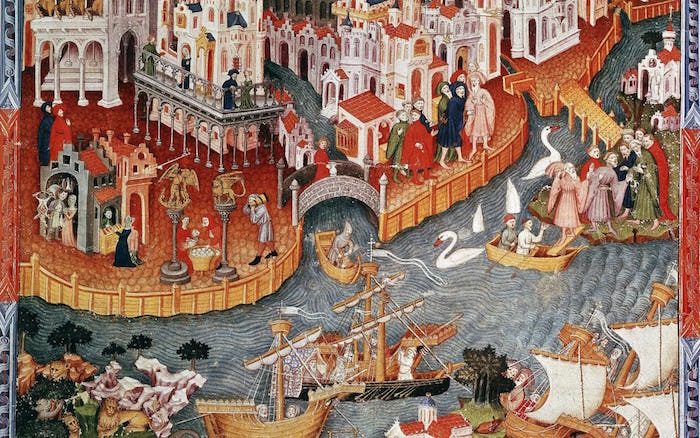The articles II Milione, the transcribed observations of Marco Polo while in China.

Is it Real, Fake, or Embellished?
The Travels of Marco Polo, known in Italian as II Milione, is a written account of stories related by Marco Polo to Rustichello de Pisa, when they were imprisoned together in Genoa. The brilliantly written account has earned both believers and doubters over the years. Those that do not believe the writings to be authentic, question the veracity of the incredible stories and say the writings are more notable for what they do not describe. Others believe the author purposefully embellished Polo's stories to sell more books, and still others doubt that Polo ever travelled to China.
Organization of the Books
The writings describe Polo's three-year journey through China and are divided into four books. The first book describes the journey to China; the second book describes China (Cathay and Manji) and the court of emperor Kublai Khan; the third book describes other parts of Asia such as Japan and southeast Asia; and the fourth book describes wars involving the Mongols.
Polo's Descriptions
Whether real, fake, or embellished, Polo's writing sparked incredible interest in the treasures that lay to the east, among monarchs and explorers. The writings describe Mongolian culture and some of its practices; such as using paper money and burning coal to produce heat. Polo described the coal as black rocks that burn like wood. He noted that coal was so plentiful that people took two to three hot baths a week, which was in stark contrast to the two or three baths taken per year by most Europeans. Polo also wrote about the prodigious iron works, salt mines, and network of canals that connected China's cities. He wrote about the amazing Mongol communication and delivery system in which dispatches were delivered quickly by relay runners, who ran a certain distance before handing the dispatch to another runner. He also described paperback books, ceramic bowls, wine made from rice, and silk clothing.
Cumbuluc and Hangzhou
Polo described the city of Beijing, which was then called Cambuluc below:"It has a vast population inside the walls and outside, that it seems quite past all possibility. There is a suburb outside each of the gates, which are twelve in number; and these suburbs are so great that they contain more people than the city itself [for the suburb of one gate spreads in width till it meets the suburb of the next, whilst they extend in length some three or four miles]."
Polo claimed the southern city of Hangzhou was the greatest city in the world, and was mesmerized by its population that he estimated to be greater than 1.5 million people. Polo regarded the Chinese cities he visited in China as much superior to those in Europe.
Even if the Writing Were Fake...
Doubters point out that he failed to mention things like the Great Wall of China and described the Mongols in a much more complimentary way than did previous explorers. Whatever the case may be, Polo's books influenced Christopher Columbus. Columbus was said to have carried a copy of Polo's book in his voyage west to the Americas.
Related activities
Advertisement

